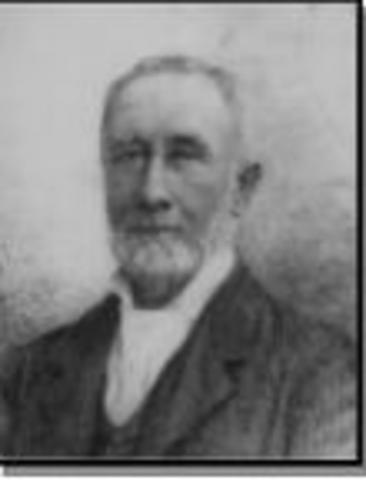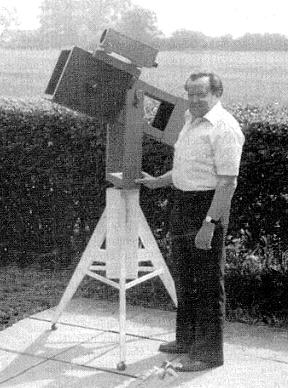Forum Replies Created
-
AuthorPosts
-
 Denis BuczynskiParticipant
Denis BuczynskiParticipantOwen, shame you are not going to make it to the meeting. Your presence will be missed. Can to tellme any city in England that is not too expensive to travel to by train and where parking a car is not a problem. Perhaps we can hold the next meeting there!
Denis
 Denis BuczynskiParticipant
Denis BuczynskiParticipantAs a complete side track to this issue. I wonder if Phillip or Mike have ever visited the Temple Observatory at Rugby School. It houses one of the first Alvan Clark refractors. I visited there in the 1980’s and I understand the observatory (telescope) has had some refurbishment work done recently. Any information wold be useful.
Denis
 Denis BuczynskiParticipant
Denis BuczynskiParticipantWhen I was younger in my 30’s I was able, on many occasions in the afternoon whilst the Sun was well up not at dusk, to look in a clear sky in the area of sky where I knew Venus was located and see it quite easily Once located it could be seen again for the rest of the afternoon if it stayed clear. My eyesight was good then, not so good now though. I seem to remember that I could see about 13 stars in the Pleiades.I have never been able to see Mercury with the unaided eye in the daytime but occasionally Jupiter coud be seen in really clear daytime skies. I remember the afternoon of the day after the SL9 impact pointing my telescope at Jupiter during the daytime, without circles or goto, just pointing the finder at Jupiter, which I could see with my naked eye, then to get an unexpected surprise when I looked through the eyepiece and saw the jaw dropping sight of the impact scars on Jupiter.
Denis Buczynski
 Denis BuczynskiParticipant
Denis BuczynskiParticipantHello all, I was able to observe on around 100 nights in 2018, this does not include the months of June Aand July where bright all night twilight stops me observing.So around a third of the nights have been used for observation this is simliar to other years I have been at Tarbatness. I reported 1540 astrometric postions of comets to MPC. An average of 3 positions for each comet gives around 500 comets (many are the the same comet observed on different nights). My two automatic meteors cameras (12mm and 3.8mm fl) recorded at total of 4891 meteors. Strangely there was only 1 digit differnce between the two cameras over the year (2445 , 2446).
Observational astronomy is a nice pass-time isn’t it?
Denis Buczynski
 Denis BuczynskiParticipant
Denis BuczynskiParticipantI seem to remember that visual double star measurments were the main use for this telescope, am I correct/ it is a dual reflecting telecope with 12 and 10 inch mirrors mounted in parallel fashion.
 Denis BuczynskiParticipant
Denis BuczynskiParticipantHi Helen, here is a preliminary ephemeris by Nakano published on CBET 4569
Nakano provides the following preliminary ephemeris for the comet:
2018 TT R.A. (2000) Decl. Delta r
Nov. 5 12 06.22 -02 26.5 1.549 1.013
6 12 10.91 -02 21.2 1.549 1.012
7 12 15.60 -02 15.7 1.550 1.011
8 12 20.29 -02 10.2 1.550 1.011
9 12 24.97 -02 04.6 1.551 1.012
10 12 29.64 -01 59.0 1.552 1.012
11 12 34.30 -01 53.3 1.553 1.013
12 12 38.95 -01 47.6 1.555 1.014
13 12 43.59 -01 41.8 1.556 1.015
14 12 48.22 -01 36.0 1.558 1.017
15 12 52.84 -01 30.2 1.560 1.019 Denis BuczynskiParticipant
Denis BuczynskiParticipantHello all,
Talk of large eyepieces made me think of the thread on Antique Telescope Forum about the Great Melbourne Telescope and the low power eyepiece used on it. Here is a picture of the eyepiece with a field lens of 8 inch diameter! That is a large eyepiece.
 Denis BuczynskiParticipant
Denis BuczynskiParticipantHi Erik,
Why do you need to adjust the uprights for levelling. Just use bolt down supports like these from Wicks (4″x4″) and cut them the correct length and use a long spirit level to get them true before fixing them. I have used these on a good few observatories that I have built over the years without problems.
Best of luck.
Denis

 Denis BuczynskiParticipant
Denis BuczynskiParticipantHi Gary,
Great image of this comet in outburst. Lovely colour image with plenty of the tail detail recorded. I have saved this image for inclusion in the BAA Comet Archive. It would be appreciated if you would send any further comet images you take to thie BAA Comet Section at
Denis Buczynski Secretary BAA Comet Section
 Denis BuczynskiParticipant
Denis BuczynskiParticipantHi Jack,
I do not see a picture of McClean in my copy of Analysis of Starlight, only descriptions of his work.Jeremy’s request was for a reference to a picture of him.Attached is a picture of him from the PDF I referred to in my earlier post.
Best wishes
Denis

 Denis BuczynskiParticipant
Denis BuczynskiParticipantHi Jeremy, There is a thumbnail image of Frank McClean in this PDF
http://www.saao.ac.za/~isg/poster_mcclean.pdf
Denis Buczynski Denis BuczynskiParticipant
Denis BuczynskiParticipantSad sad news. Maurice was a pioneer for amateurs a great observer and always a pleasure to work with. Nick James and my self were able to confirm his SN discovery in 2011 , he was pleased about that. His London home observatory was always active and ever changing as he incorporated new technology as it became available. he will be sorely missed by all in the BAA who knew him. Rip Maurice.
Denis Buczynski
 Denis BuczynskiParticipant
Denis BuczynskiParticipantI have been able to get observations on a good few nights since outburst occurred. I can get to the area of sky where it is located but it is in bright twilight for me here at Tarbatness. The 15th mag companion star just to the north of the nova is now showing on my images. Just to blow my own trumpet I got a reference in that Darnley/ Starrfield paper as being one of the first to report photometry. I seem to have good luck with getting onto nova quickly after outburst is announced.
 Denis BuczynskiParticipant
Denis BuczynskiParticipantHi Adam,
I don’t know if I can help but I have a series of my own drawings of Saturn made during the edgeways ring plane passege of 1980. The moons are identified on 7 of my drawings. If these are of any use I can scan them and email them to you. Let me know.
Denis
 Denis BuczynskiParticipant
Denis BuczynskiParticipantHi Eric,
I never watched the programme, although I knew about it. I will catch it at some point on utube. One disapointing aspect of the aftermath of Roy passing was that no one seems to have rescued any of his own build telescopes, including the 10 inch with which he made his comet discovery, nor any of his astronomical papers etc. Surely some one in his home town of Northampton would have known about his death at the time.

 Denis BuczynskiParticipant
Denis BuczynskiParticipantThanks for posting this published obituary of John, it was an interesting read about a very interesting man.Sad that he is no longer with us.
Denis
 Denis BuczynskiParticipant
Denis BuczynskiParticipantHi Gary ,
Interesting to see this new version of the VSS Circular. It seems to be the way that things are going these days. The BAA digital subscription will be good news for those groaning book shelves.
Denis
 Denis BuczynskiParticipant
Denis BuczynskiParticipantThanks Peter and Andy.
I should and could have looked at Who’s Who myself. Just laziness on my part, sorry. It would be useful if the email addresses of the Trustees were appended to their thumbnail imags on Who’s Who.
Thanks Denis
 Denis BuczynskiParticipant
Denis BuczynskiParticipantHello all and Happy New Year,
Looking at my observing data I see that I observed comets on 101 nights in 2017. That excludes the period between mid May to mid August when the twilight sky is too bright here in Highland Scotland. I submitted more than 1200 astrometric positions of comets to the MPC (3 per comet in a single night) and the BAA Comet Section. My 2 automatic meteor cameras recorded about 3000 meteors( some duplicates) they are turned off during the May – August all night twilight. This summary does not include any observations of Aurora nor NLC.Nor any nights I was away from home and unable to observe. not exactly New Mexico but not bad for the cloudy UK. Persistance and retirement from work are the key to observing regularly.
Denis Buczynski
 Denis BuczynskiParticipant
Denis BuczynskiParticipantHi Tony again,
I have now looked at my third copy of this atlas, which is named Atlas of The Heavens and not Atlas Coeli. It is published by Sky Publishing in 1969. All the charts in it are in negative form. This I think is field edition and not rare. The earler copies of the Atlas I have are, one that is entitled Atlas of The Heavens and was published in 1949 by Sky Publishing containing maps on individual sheets sized 24×18 inches. The other I have is one entitled Atlas Coeli published by Czech Academy( in 4 languages Czech, Russian, English and German) in 1962 it contains bound maps in sheets 21×15 inches. All are for Epoch 1950.0. Looking at your picture of the Atlas you have it looks a modern edition with a folding bound maps. This is probably the desk edition.This and the negative maps were probably able to be purchased together. So I think you have a modern set of maps and no hens teeth are present! Still a great set of star maps though. If you need any pics of the various copies I have let me know.
Denis
-
AuthorPosts
